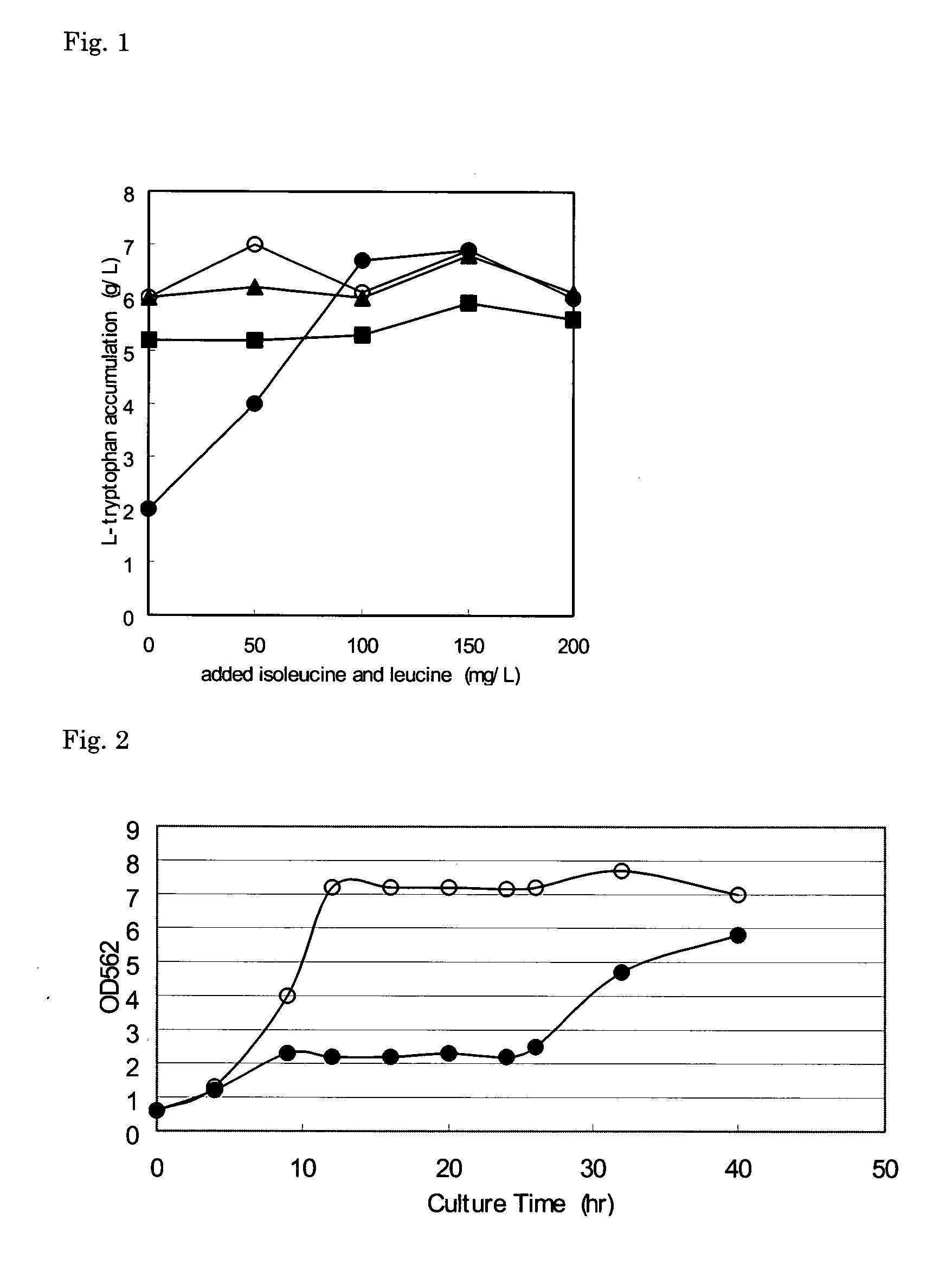L-amino acid-producing bacterium and a method for producing L-amino acid
- Summary
- Abstract
- Description
- Claims
- Application Information
AI Technical Summary
Benefits of technology
Problems solved by technology
Method used
Image
Examples
reference example 1
[0063] Using the L-tryptophan-producing strain SV164 / pGH5, the effect of the addition of branched-chain L-amino acids on accumulation of L-tryptophan was investigated.
[0064] The SV164 / pGH5 strain is an L-tryptophan-producing strain which is obtained by introducing the plasmid pGH5 which contains a mutant serA gene encoding a feedback-desensitized phosphoglycerate dehydrogenase (see WO 94 / 08031) into the SV164 strain. The SV164 strain (JP 3032013 B) is a strain which is obtained by introducing a mutation into an allelic gene of the TrpE gene which encodes anthranilate synthase in YMC9 strain (ATCC 33927), which is a strain derived from the K12 strain.
[0065] Predetermined amounts of L-isoleucine and L-leucine were added to a medium for L-tryptophan production (40 g / L glucose, 1.5 g / L KH2PO4, 0.5 g / L NaCl, 15 g / L (NH4)2SO4, 0.3 g / L MgSO4.7H2O, 14.7 mg / L CaCl2.2H2O, 75 mg / L FeSO4.7H2O, 0.15 mg / L Na2MoO4.7H2O, 0.7 mg / L CoCl2.7H2O, 1.6 mg / L MnCl2.7H2O, 2.5 mg / L H3BO3, 0.25 mg / L CuSO4.7H...
example 1
Acquisition and Evaluation of the L-valine Resistant Strain
(1-1) Acquisition of the L-valine Resistant Strain
[0067] L-valine resistance was introduced by P1 transduction. M1162 strain (Lawther et al., J. Bacteriol., 149, 294- (1982)) and TDH7 strain (EP-0593792-B1, VKPM B-5318) were used as a donor strain for the L-valine resistance. The mutation in the M1162 strain which relates to valine resistance resides in the ilvG gene, which has been identified as ilvG603. The ilvG gene of MI162 strain is shown in SEQ ID NO: 3, and the frameshift mutation observed in the ilvG gene of the K12 strain has been reversed. Meanwhile, TDH7 is mutated so that the C at position 979 of SEQ ID NO: 1 is deleted, and the frameshift mutation observed in the ilvG gene of the K12 strain has been reversed. The ilvG gene of the TDH7 strain is shown in SEQ ID NO: 5. The above-described SV164 / pGH5 strain was used as a recipient strain.
[0068] In accordance with a conventional method, a P1 transduction experime...
PUM
| Property | Measurement | Unit |
|---|---|---|
| Density | aaaaa | aaaaa |
| Fraction | aaaaa | aaaaa |
| Fraction | aaaaa | aaaaa |
Abstract
Description
Claims
Application Information
 Login to View More
Login to View More - R&D
- Intellectual Property
- Life Sciences
- Materials
- Tech Scout
- Unparalleled Data Quality
- Higher Quality Content
- 60% Fewer Hallucinations
Browse by: Latest US Patents, China's latest patents, Technical Efficacy Thesaurus, Application Domain, Technology Topic, Popular Technical Reports.
© 2025 PatSnap. All rights reserved.Legal|Privacy policy|Modern Slavery Act Transparency Statement|Sitemap|About US| Contact US: help@patsnap.com


